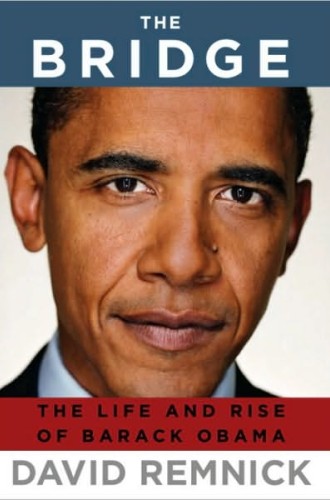Obama’s moment
When I opened this biography, I was as curious about how David Remnick would pull off a biography of a sitting president—after only one year in office—as I was about Obama himself. Is there more to learn about Obama? Michelle Obama said during the campaign that her husband's life is "an open book. He wrote it and you can read it." She was referring not only to his autobiography, Dreams of My Father, but to the fact that Obama is not a man of many secrets. If there is any remaining mystery, it is probably the result of our own inability to fathom a person who doesn't fit our categories.
The portrait painted by Remnick is quite familiar. He shows us how hard Obama worked to forge his identity, how comfortable and fluent he is in various cultural and linguistic contexts, and how capable he is of weighing the merits of different points of views. He is both comfortable in his own skin and a little touchy about criticism.
Read our latest issue or browse back issues.
Remnick is less interested in Obama's personality than in the cultural moment of his emergence. The title refers to Obama's role as a bridge between the civil rights movement of the 1960s and the new political possibilities for African-American leadership that Obama's rise portends. The book begins with a meditation on a pivotal day in civil rights history, March 7, 1965, known as Bloody Sunday, when civil rights marchers, including John Lewis, attempted to cross Edmund Pettus Bridge in Selma, Alabama, and were attacked by police.
Remnick argues that Obama sees himself as a member of "the Joshua Generation" (the title of Remnick's 2008 piece in the New Yorker), a generation of African-American politicians who inherited the legacy of the civil rights movement but who are different kinds of political leaders than their civil rights heroes. Obama, in this metaphor, is Joshua to John Lewis's Moses—someone who can actually take African Americans to the promised land.
The formulation helps to clarify Obama's complicated relationships to African-American leaders of the older generation, and much of Remnick's book is focused on analyzing these relationships. Some, like Lewis, unequivocally embraced Obama's leadership. Others, like Jesse Jackson, chafed at Obama's style. Obama's careful distancing of himself from identity politics prompted some blacks to complain that Obama is not "black enough" and to suspect that he doesn't really represent African Americans.
Remnick's biography is heavy on the ins and outs of everyday politics. It is lighter on the question of how Obama developed his policies and where his political beliefs come from. That creates a certain imbalance: Obama comes off more as a shrewd politician (which of course he is) and less as a powerful thinker (which I suspect he also is). The reader learns a lot about almost every major political player in Chicago, but nothing, for example, about Reinhold Niebuhr, the theologian who is said to have had major influence on Obama's understanding of politics. I would have liked a greater balance between the two parts of Obama's achievement.
Instead, Remnick embroils his reader in the minutiae and squalor of Obama's campaigns. The reader gains a strong sense of people who are part of Obama's inner circle. David Plouffe, David Axelrod and Valerie Jarrett all make notable appearances. Perhaps the most significant figure besides Obama is Michelle Obama. Remnick shows her to be what her husband says she is: a woman with her feet on the ground and her eyes wide open. When Obama was sworn in as senator in 2005, after having received international attention for his speech at the Democratic convention the year before, Michelle Obama remarked (according to a Chicago Tribune story), "Maybe one day he will do something to warrant all this attention."
She is a reluctant politician's wife. She would have preferred a more private and more stable life, working perhaps in a foundation. Remnick gives a vivid portrait of her frustration during the years that she spent raising small children while her husband, as a state senator, drove around the state of Illinois shaking hands.
Equally striking is the account of how unhappy Obama was as a senator, both in the Illinois state house and the U.S. Senate. Not attracted to the constant socializing and good-ol'-boy traditions of congressional politics, he spent many lonely hours in his hotel room, going over policy notes, watching sports on TV and talking to Michelle on the phone. Remnick tells of Obama sitting in a committee meeting—where he was 18th in line to ask questions—listening to Joe Biden give what Remnick calls a "bloviation." Obama passed a note to an aide that read: "Shoot. Me. Now."
In Remnick's view, Obama was too restless and ambitious to enjoy the slow rhythms of Congress. When the iron of presidential politics was hot—something that for him happened quickly—he struck.
Remnick argues that one of Obama's central contributions has been to change Americans' narrative about themselves. Obama rejects both the "bootstrap" narrative of rugged individualism and the multicultural narrative of America as a collection of various injured parties. He chooses a third alternative in which all Americans can draw on the African-American experience to understand themselves as a people of progress and change, part of a nation in which the harmful past can be transcended and all can work together to create a better future. He draws on the African-American experience not to stress victimization, but to demonstrate that America is continually reaching to become more of what it is meant be.
These are interesting points, and Remnick takes no short cuts in getting us there. But still I wonder: Why did Remnick write this biography now? It seems both too late and too soon. The many details Remnick supplies do not alter the picture of Obama that emerged in the campaign and in his early months as president, and at times Remnick seems unable to decide which of the political details of Obama's rise are most significant. Perhaps it is just too early to tell.
Read Lillian Daniel's review of Game Change by John Heilemann and Mark Halperin.







